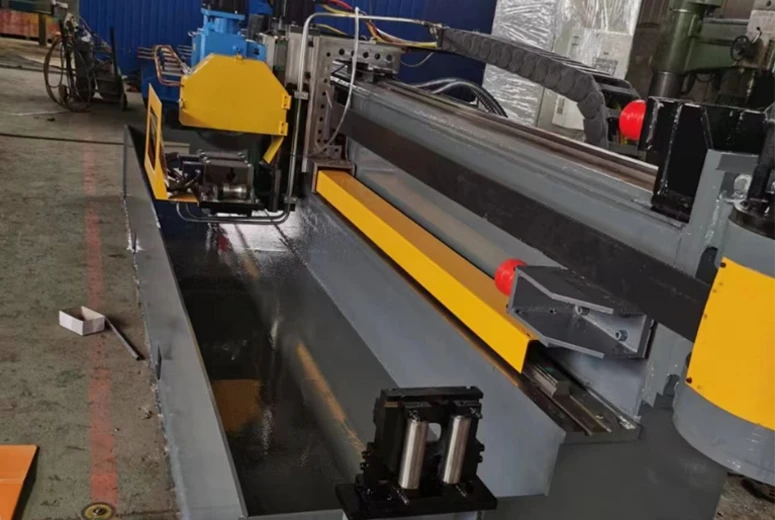Wheel Alignment and Repair Equipment for Precision Straightening Solutions
Understanding Wheel Straightening Machines A Comprehensive Overview
In the automotive industry, wheel straightening machines play a crucial role in restoring damaged wheels to their original shape and functionality. As vehicles continue to be a primary mode of transportation globally, maintaining wheels in optimal condition is essential for safety, performance, and aesthetics. This article delves into the significance of wheel straightening machines, their operational mechanisms, and the benefits they offer to both service providers and vehicle owners.
What is a Wheel Straightening Machine?
A wheel straightening machine is a specialized piece of equipment designed to repair bent or damaged wheels, particularly those made from aluminum or alloy materials. These wheels may become deformed due to various reasons, including potholes, curbs, and accidents. Wheel straightening machines apply precise pressure to correct the wheel's shape, ensuring that it meets the manufacturer’s specifications.
How Does it Work?
The operation of a wheel straightening machine involves several key steps, each critical to achieving optimal results
1. Inspection and Assessment Before straightening a wheel, a thorough inspection is necessary. Technicians use tools such as run-out gauges and dial indicators to assess the degree of damage. This evaluation determines the correct approach for the straightening process.
2. Setup The wheel is mounted on the straightening machine. Depending on the design of the machine, this may involve clamping or securing the wheel in a manner that allows for proper manipulations.
3. Application of Force The machine uses hydraulic or mechanical force to apply pressure to specific areas of the wheel. This targeted approach is crucial, as uneven pressure can cause further damage. Operators skillfully maneuver the machine to ensure accurate adjustments.
4. Re-Inspection After the initial straightening, the wheel undergoes a second inspection to verify that it has returned to its original specifications. If any discrepancies remain, the technician may repeat the straightening process until satisfactory results are achieved.
wheel straightening machine

5. Finishing Touches Once straightened, the wheel may require additional treatments, such as polishing or painting, to restore its aesthetic appeal. This step helps in maintaining the overall appearance of the vehicle.
Benefits of Wheel Straightening Machines
The advantages of incorporating wheel straightening machines into automotive service operations are manifold
1. Cost-effective Repair Repairing a damaged wheel is significantly cheaper than replacing it. Wheel straightening machines enable service centers to provide cost-effective solutions to customers while maintaining quality.
2. Immediate Service In many cases, straightening can be done on-site and within a short timeframe. This immediacy satisfies customer needs and enhances service efficiency.
3. Environmental Impact By repairing rather than replacing wheels, service providers contribute to sustainability efforts. This practice reduces waste and lowers the demand for new materials, supporting a more environmentally friendly approach to automotive maintenance.
4. Enhanced Safety A straightened wheel restores proper alignment and balance to a vehicle, reducing the risk of accidents. Properly functioning wheels improve overall handling and stability, contributing to safer driving conditions.
5. Market Demand As consumers become more aware of the importance of maintaining their vehicles, the demand for wheel straightening services is on the rise. Businesses equipped with high-quality wheel straightening machines can attract a broader customer base.
Conclusion
In conclusion, wheel straightening machines represent a vital innovation in the automotive repair industry, facilitating the efficient and effective restoration of damaged wheels. By understanding their functionality, advantages, and the importance of wheel maintenance, both service providers and vehicle owners can appreciate the significance of these machines. Investing in advanced wheel straightening technology not only enhances service offerings but also contributes to a safer, more sustainable automotive ecosystem. As automotive technology continues to advance, wheel straightening machines will remain an indispensable tool for ensuring vehicle safety and performance.
-
High Frequency Straight Seam Welded Pipe Production Line-BzZhou Xinghua Machinery Equipment Manufacturing Co., LTD.|line pipe steel&welded gas pipeNewsJul.30,2025
-
High Frequency Straight Seam Welded Pipe Production Line-BzZhou Xinghua Machinery Equipment Manufacturing Co., LTD.|High Precision&Automated SolutionsNewsJul.30,2025
-
High Frequency Straight Seam Welded Pipe Production Line - BzZhou Xinghua Machinery Equipment Manufacturing Co., Ltd.NewsJul.30,2025
-
High Frequency Straight Seam Welded Pipe Production Line-BzZhou Xinghua Machinery Equipment Manufacturing Co., LTD.|Precision Welding, High EfficiencyNewsJul.30,2025
-
High Frequency Straight Seam Welded Pipe Production Line|BzZhou Xinghua|Precision Welding&EfficiencyNewsJul.30,2025
-
High Frequency Straight Seam Welded Pipe Production Line - BzZhou Xinghua|Precision Engineering&EfficiencyNewsJul.30,2025


